The Leaf River, Part 1
Part 1 of either 2 or 3 stories about our summer expedition in Northern Quebec. This story is just the beginning, but for me it highlights that an adventure is truly the sum of its parts.
The Leaf River, Part 1
If I close my eyes I can be right back there again: frozen feet and hands, warm torso, soaked arms and legs, shining sun, cold arctic wind, the sound of rushing water, the constant feeling of being part of something incredible, and surrounded in an amount of nature that I think many people never even dream of. It’s a feeling that is fresh and alive and it’s the kind of memory to cherish for a lifetime. I reflect now on how epic this journey felt in almost every moment and how thoroughly the arctic will test you, your body, your equipment, and your planning. Maybe especially your planning. I’ve done some reasonably significant paddling in my life, from canoeing in central Alaska as a kid with my dad to relatively big trips in southeast Alaska, Iceland, and Maine. Wilderness medical training, five different water rescue classes, and a lifetime of traveling also help, but it took all of that experience combined for me to meet the challenges of the Leaf River (Riviére de Feuilles in French), particularly with the water conditions of the time and our self-imposed timelines. In retrospect, I think it’s safe to say it was the exact right amount of adventure all the time, as physically demanding as it was emotionally rewarding, often more of one than the other in any given moment, but always ultimately balanced. This was a journey that I will never forget, as much for the nature as the company and the sense of extreme adventure.
Our journey really began months before with an idea from my friend Tim Kunin. Tim, his brother Drew, and another friend paddled this river in 1998 and marked it as one of their best river trips among many in their lifetimes. Tim and Drew have been wanting to do the river again for a while, this time starting at the headwaters in Lake 233 (most of the lakes are named for their elevation in meters). It took a while to put together a team, finding the combination of people who had the time, skill and resources to pull off this trip. Eventually we locked in a team of six people: Tim and his brother Drew, Tim’s son Daniel, and friends Dale Ewart, Andy Levin, and Myself. After a couple of months of planning and gear accumulation/packing, the six of us began our individual journeys from our homes in Miami, Santa Barbara, Detroit, Pittsburg, New York, and Minneapolis. We traveled in two groups, mostly because of the lack of onward flights northward, and each group of three spent a day in Montreal, the first group shopping and the second group packing the bulk of food and shared equipment. On August 27th, we all linked up together at last in Kuujjuaq, Quebec, on the Ungavan peninsula, essentially between Hudson bay to the west and Ungava Bay to the east. As we flew over the peninsula headed north, the most noticeable feature of the landscape was just how much water there is. Lakes, rivers, streams, ponds, and creeks seem to be everywhere as far as the eye can see. There is truly an unbelievable amount of water. It gives the impression that the land is an over-full sponge, soaked to the bursting point. The dry part of the landscape is generally small conifers, scrubby elder, tundra and rock. It's rugged and wild and seems like it must all go on forever, giving you the sense that you’re entering a place that is just unimaginably expansive. Its prolific but broken rock features look young enough that you can easily visualize glaciers moving, carving, shaping, and transforming.

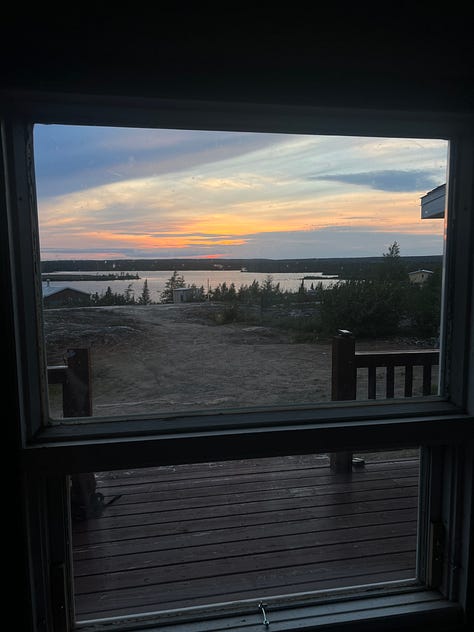
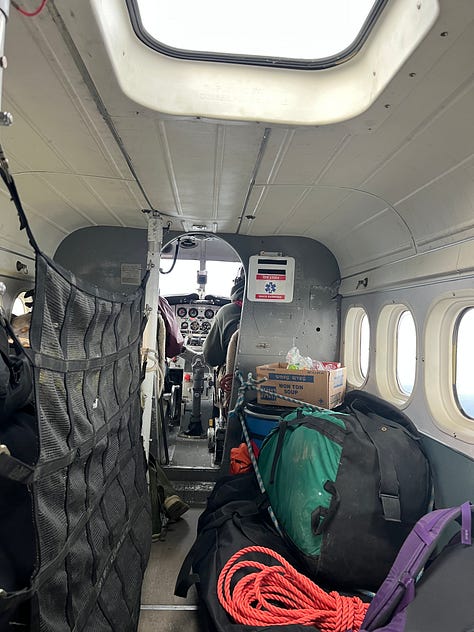
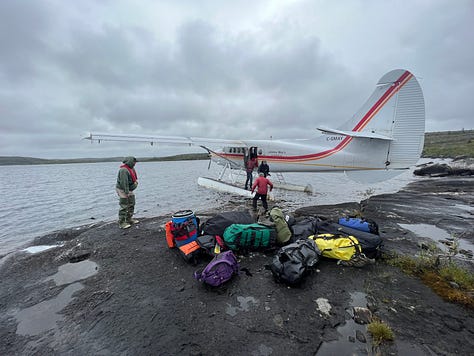
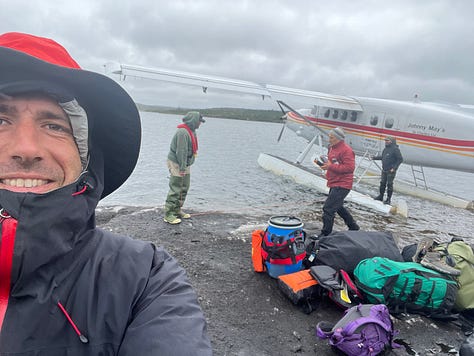
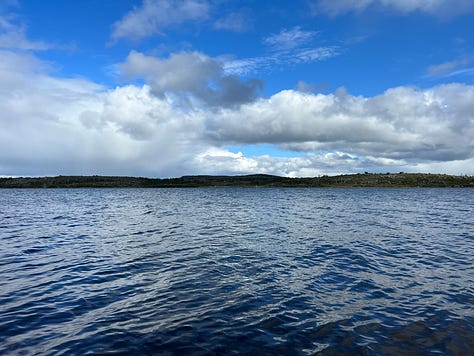
Our first step in Kuujjuaq is to undertake the complex task of weighing all of our gear for the float plane and doing a final pack of everything; complex because six people worth of food, pack canoes, camping gear, and the waterproof barrels and bags it takes to keep it all together seems absolutely massive when put all together. We make an effort to shed some stuff and therefore weight. This is the first time we’re offline together figuring out how everything fits and it’s all a bit messy. We think we are in pretty good shape the first time, drawing from lots of experience, and we feel ready until the pilot throws a huge wrench in our plan: we’re told we’re severely overweight for the plane and he presents us with three options. We can shed a couple of hundred pounds (not practical), reduce the flight distance down from near maximum range (change destinations), or take two trips. We don’t bother spending too much time lamenting the fact that at no point in two months of communication with the float plane operator did they ever suggest six people plus their stuff wouldn’t fit on the plane. Chalk that down to a new lesson for us all.
Everything has felt pretty adventurous already, buying things, planning, testing, packing, flying; but perhaps the truest measure of adventure is in fact when you start having to make difficult and consequential decisions that will affect the outcome of the entire trip, such as whether to run a rapid, portage, or change a plan. We weigh the pros and the cons of each of our current options. Taking two trips allows us to stick with our original plan, which is ideal its own right, but will mean paying twice as much for this already expensive leg of the trip and, due to timing, the pilot says only half of us can go each day and we will be risking weather delays each day. This plan will immediately eat up one of our built-in weather days and could leave the advanced party stranded or have major implications for the pick up at the end of the trip. It’s not an easy decision to make but ultimately, we decide that the vision of doing the entire watershed from source to ocean makes the two trips worth it.
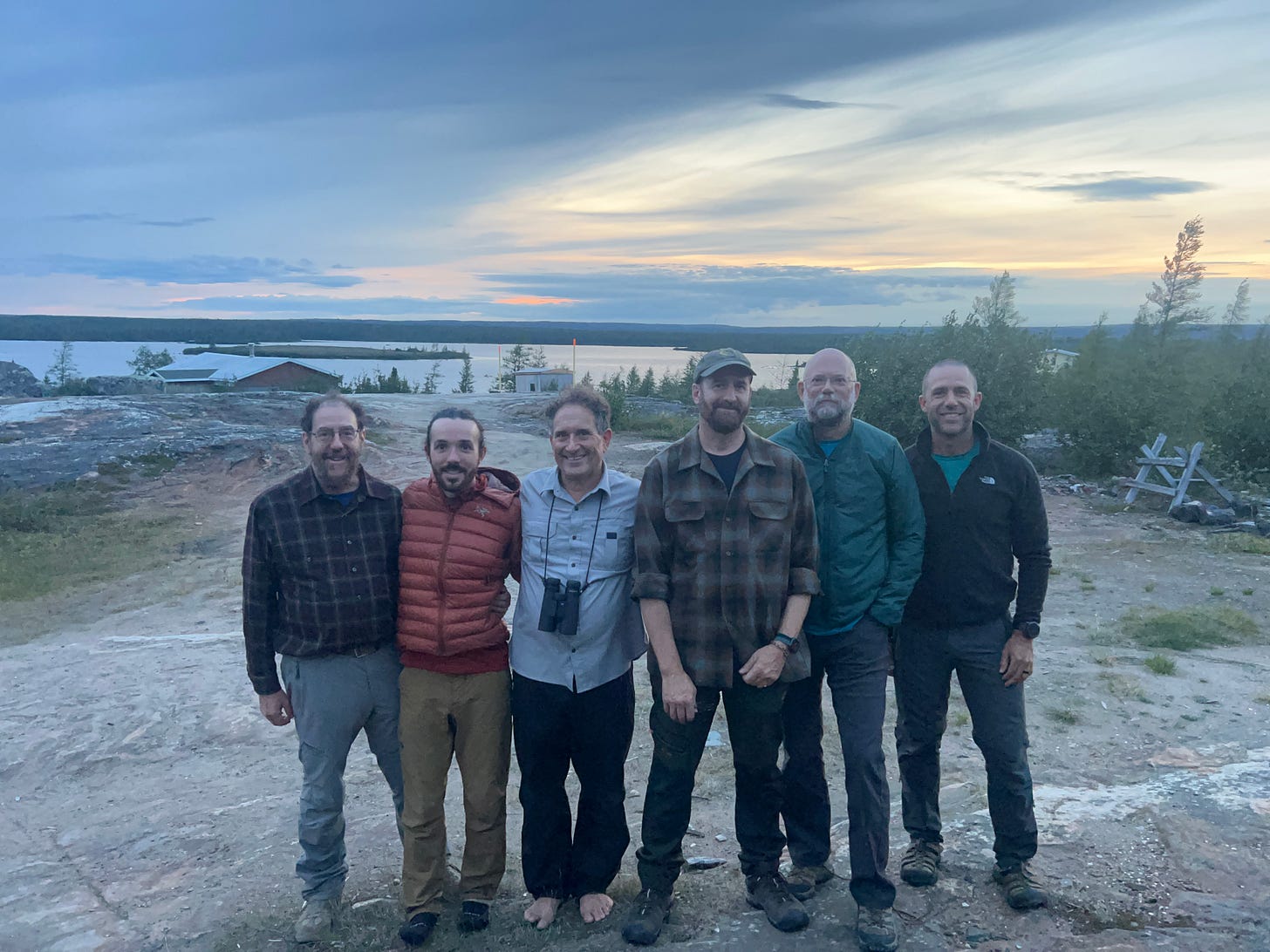
To be ready for this new plan, we must divide everything between our two groups, sending all of the boats in the first load for assembly and sending 1/3rd of the food to keep the weight down. It feels good to have a plan again and to get to work on the final shakedown of gear, comparing items, removing unnoticed duplicates, and trying to cut our weight down even more. Daniel and I go for a 3-mile run, which we end by jumping in a frigid lake; it feels like the perfect start for what’s to come. Darkness descends slowly in the arctic and brings with it a stellar near-full moon lighting the rugged landscape, creating stark silhouettes and deep, resounding shadows. We take the time to appreciate the view and the crisp cold wind, then settle into our loaned cabin near the seaplane port so three of us can get our last night of indoor sleep for a couple of weeks.
The morning is all excitement. We’re up bright and early, packed and lakeside just after dawn, ready to load the De Havilland DHC-2 Beaver float plane that, at one point, flew combat missions in Vietnam. It’s been around a bit and it shows. Tim and Drew flew on the same plane the last time they were here in 1998. We saw it fly a few times in high winds the day before and one gets the impression that this aircraft is part of this landscape and has been for the better part of 60 years.
(Video out the window of the float plane between our unscheduled landing and Lake 233)
Andy, Drew and I are the first crew. We say goodbye to the other half of the team, load and settle in for what should be about a two-hour flight to the lake. It’s very foggy and none of us is particularly surprised when the pilots suddenly make an un-scheduled landing on a big lake. They can’t see well enough to keep flying so we wait out the weather. The wind is so strong that it blows the aircraft toward the shore, forcing the pilots to power up four times to taxi out into the middle. Meanwhile we are looking at our maps and messaging the rest of the team in Kuujjuaq. We start planning routes from this location just in case the pilots tell us they have to turn back. Big changes with no planning are bad ideas in this type of isolated wilderness but we at least work through the process to see if it makes sense. Quite suddenly, with perhaps equal amounts of relief and concern, we sit back in our seats as the pilots power up and take off. Now we are flying low, below the fog. Close enough to spook caribou on the ground and very clearly see them running away from us. We are moving fast and low and the feeling is invigorating or terrifying depending upon the moment. We still can’t see very far so, but we have no option except to trust the pilots. I’m watching our location via gps and before very long, we descend, landing in two unusually big bounces before quickly taxiing to the shore of Lake 233. We’ve come a very long way already but we’ve only just now officially reached the starting line.
Unloading is quick. Andy holds the plane in place with a rope while the rest of us quickly sling backs to the huge rocks on the shoreline. The pilots are anxious to go. The fog has burned off at this point and they have other customers waiting somewhere. The plane takes off with a final roar of sound, and a few minutes later we find ourselves in absolute, all-encompassing silence. It envelops us like a comfortable blanket warming our very souls. This sensation by itself makes the entire effort worth it. Our phones are useless here except as cameras. There are no distractions, no interruptions, no litter, nothing but the Earth at its very best, isolated and teeming with life. The sensations of being so far from human civilization are utterly invigorating in a way that is as hard to explain as it is to replicate. We’ve come far to achieve this. We are alone.



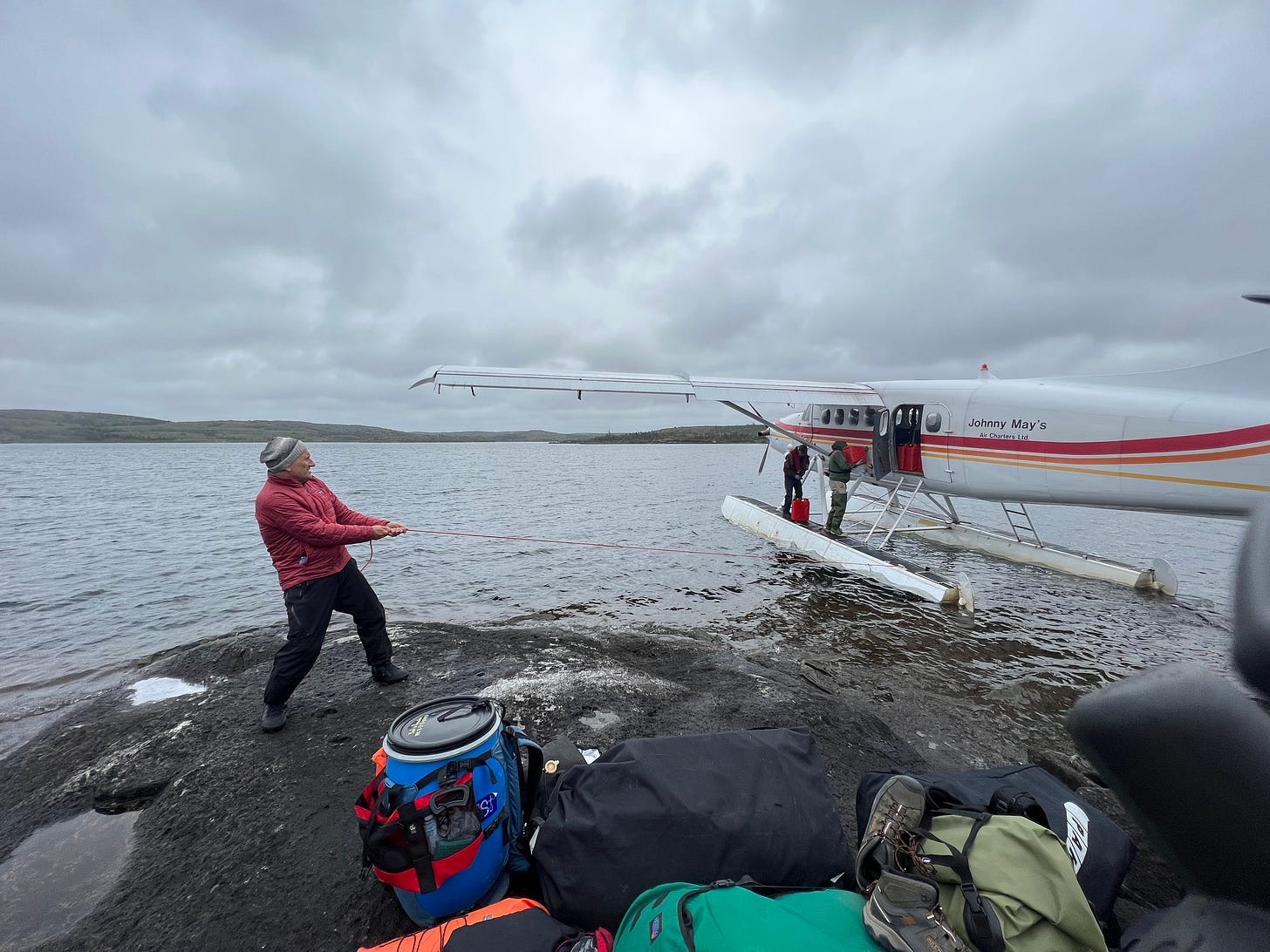

You continue to surprise me. Please keep the story going.